 Tìm kiếm
Tìm kiếm
Chương II Nghị định 31/2019/NĐ-CP hướng dẫn Luật tố cáo I: Quy định chi tiết một số điều của luật tố cáo
| Số hiệu: | 31/2019/NĐ-CP | Loại văn bản: | Nghị định |
| Nơi ban hành: | Chính phủ | Người ký: | Nguyễn Xuân Phúc |
| Ngày ban hành: | 10/04/2019 | Ngày hiệu lực: | 28/05/2019 |
| Ngày công báo: | 23/04/2019 | Số công báo: | Từ số 393 đến số 394 |
| Lĩnh vực: | Bộ máy hành chính | Tình trạng: | Còn hiệu lực |
TÓM TẮT VĂN BẢN
Cán bộ cố ý làm sai lệch hồ sơ vụ việc tố cáo sẽ bị cách chức
Đây là nội dung nổi bật tại Nghị định 31/2019/NĐ-CP hướng dẫn Luật tố cáo được Chính phủ ban hành ngày 10/4/2019.
Theo đó, hình thức kỷ luật cách chức áp dụng đối với người có thẩm quyền giải quyết tố cáo khi có một trong các hành vi vi phạm pháp luật sau:
- Cố ý không giải quyết hoặc cố ý giải quyết tố cáo trái pháp luật gây mất ổn định, an ninh, trật tự xã hội;
- Cố ý bỏ qua các bằng chứng, bỏ lọt các thông tin, tài liệu, làm mất hoặc làm sai lệch hồ sơ vụ việc; bao che cho người bị tố cáo gây mất ổn định, an ninh, trật tự xã hội;
- Không áp dụng biện pháp bảo vệ người tố cáo thuộc thẩm quyền làm cho người tố cáo bị trả thù, trù dập dẫn đến thương tích hoặc tổn hại cho sức khỏe với tỷ lệ thương tật từ 61% trở lên hoặc bị chết.
Ngoài ra, nếu người có thẩm quyền giải quyết tố cáo tiết lộ họ, tên, địa chỉ, bút tích của người tố cáo và những thông tin khác làm lộ danh tính của người tố cáo thì bị kỷ luật dưới hình thức cảnh cáo.
Nghị định 31/2019/NĐ-CP có hiệu lực từ ngày 28/5/2019.
Văn bản tiếng việt
Văn bản tiếng anh
1. Thời hạn giải quyết tố cáo được thực hiện theo quy định tại khoản 1 Điều 30 Luật Tố cáo. Việc gia hạn giải quyết tố cáo được áp dụng đối với vụ việc phức tạp và đặc biệt phức tạp theo quy định tại khoản 2 và khoản 3 Điều 30 Luật Tố cáo.
2. Vụ việc phức tạp là vụ việc có một trong các tiêu chí sau đây:
a) Tố cáo về một nội dung nhưng phải xác minh từ 02 địa điểm trở lên;
b) Tố cáo có từ 02 nội dung phải xác minh trở lên;
c) Nhiều người tố cáo về cùng một nội dung hoặc nội dung tố cáo liên quan đến quyền và lợi ích của nhiều người;
d) Tố cáo có yếu tố nước ngoài: người tố cáo ở nước ngoài hoặc là người nước ngoài; hành vi bị tố cáo xảy ra ở nước ngoài; nội dung tố cáo phải xác minh ở nước ngoài;
đ) Nội dung tố cáo liên quan đến trách nhiệm quản lý của nhiều cơ quan, tổ chức;
e) Các cơ quan, tổ chức có liên quan trong quá trình giải quyết tố cáo còn ý kiến khác nhau;
g) Có tài liệu, chứng cứ mâu thuẫn với nhau cần có thời gian kiểm tra, xác minh, đánh giá hoặc tham khảo ý kiến của các cơ quan chuyên môn.
3. Vụ việc đặc biệt phức tạp là vụ việc có từ 02 tiêu chí trở lên được quy định tại khoản 2 Điều này.
4. Việc gia hạn giải quyết tố cáo phải được thực hiện bằng quyết định của người giải quyết tố cáo, được gửi đến cơ quan, tổ chức, cá nhân có liên quan theo quy định tại khoản 4 Điều 30 Luật Tố cáo. Quyết định gia hạn giải quyết tố cáo được thực hiện theo Mẫu số 01 tại Phụ lục ban hành kèm theo Nghị định này.
1. Người tố cáo có quyền rút một phần hoặc toàn bộ nội dung tố cáo trước khi người giải quyết tố cáo ra kết luận nội dung tố cáo. Việc rút tố cáo phải được thực hiện bằng văn bản, văn bản rút tố cáo phải ghi rõ ngày, tháng, năm; họ và tên, địa chỉ của người rút tố cáo; nội dung tố cáo được rút, có chữ ký hoặc điểm chỉ của người rút tố cáo. Trường hợp người tố cáo đến cơ quan, tổ chức có thẩm quyền trực tiếp rút tố cáo thì người tiếp nhận lập biên bản ghi lại việc rút tố cáo và người rút tố cáo phải ký tên hoặc điểm chỉ vào biên bản. Văn bản rút tố cáo được thực hiện theo Mẫu số 02, biên bản ghi nhận việc rút tố cáo được thực hiện theo Mẫu số 03 tại Phụ lục ban hành kèm theo Nghị định này.
2. Trường hợp nhiều người cùng tố cáo mà có một hoặc một số người rút tố cáo thì từng người rút tố cáo thực hiện việc rút tố cáo theo quy định tại khoản 1 Điều này. Trường hợp tất cả những người tố cáo rút tố cáo thì người đại diện thực hiện việc rút tố cáo bằng văn bản hoặc người tiếp nhận lập biên bản ghi lại việc rút tố cáo có chữ ký hoặc điểm chỉ xác nhận của những người tố cáo hoặc của người đại diện.
3. Trường hợp người tố cáo rút tố cáo mà người giải quyết tố cáo xét thấy hành vi bị tố cáo có dấu hiệu vi phạm pháp luật hoặc có căn cứ xác định việc rút tố cáo do bị đe dọa, mua chuộc hoặc người tố cáo lợi dụng việc tố cáo để vu khống, xúc phạm, gây thiệt hại cho người bị tố cáo thì vụ việc tố cáo vẫn phải được giải quyết theo quy định tại khoản 3 Điều 33 Luật Tố cáo. Người giải quyết tố cáo áp dụng biện pháp theo thẩm quyền hoặc đề nghị cơ quan, tổ chức, cá nhân có thẩm quyền áp dụng biện pháp bảo vệ người tố cáo theo quy định của pháp luật; xử lý người có hành vi đe dọa, mua chuộc người tố cáo hoặc người lợi dụng việc tố cáo để vu khống, xúc phạm, gây thiệt hại cho người bị tố cáo theo quy định của pháp luật.
1. Khi có căn cứ xác định việc giải quyết tố cáo của cơ quan, tổ chức cấp dưới có vi phạm pháp luật nghiêm trọng thì người đứng đầu cơ quan, tổ chức cấp trên trực tiếp phải giải quyết tố cáo trong những trường hợp sau đây:
a) Có vi phạm về trình tự, thủ tục giải quyết tố cáo dẫn đến kết luận tố cáo không chính xác, khách quan hoặc làm sai lệch hồ sơ vụ việc;
b) Có một trong các căn cứ quy định tại khoản 3 Điều 37 Luật Tố cáo.
2. Khi có dấu hiệu không khách quan trong việc giải quyết tố cáo của cơ quan, tổ chức cấp dưới thì người đứng đầu cơ quan, tổ chức cấp trên trực tiếp phải giải quyết tố cáo trong những trường hợp sau đây:
a) Người bị tố cáo là vợ hoặc chồng, bố đẻ, mẹ đẻ, bố nuôi, mẹ nuôi, bố mẹ bên vợ hoặc bên chồng, con đẻ, con nuôi, con rể, con dâu, anh ruột, chị ruột, em ruột của người được giao nhiệm vụ xác minh nội dung tố cáo, của người giải quyết tố cáo;
b) Nội dung tố cáo có liên quan trực tiếp đến vợ hoặc chồng, bố đẻ, mẹ đẻ, bố nuôi, mẹ nuôi, bố mẹ bên vợ hoặc bên chồng, con đẻ, con nuôi, con rể, con dâu, anh ruột, chị ruột, em ruột của người được giao nhiệm vụ xác minh nội dung tố cáo, của người giải quyết tố cáo;
c) Người được giao nhiệm vụ xác minh nội dung tố cáo, người giải quyết tố cáo có lợi ích liên quan trực tiếp với người bị tố cáo.
3. Người đứng đầu cơ quan, tổ chức cấp trên trực tiếp lấy vụ việc tố cáo để giải quyết theo quy định tại khoản 1, khoản 2 Điều này phải có văn bản yêu cầu cơ quan, tổ chức cấp dưới chấm dứt việc giải quyết và chuyển hồ sơ vụ việc cho cơ quan, tổ chức cấp trên.
Khi nhận được hồ sơ vụ việc, thủ trưởng cơ quan, tổ chức cấp trên ra quyết định thụ lý tố cáo và thông báo bằng văn bản cho người tố cáo, người bị tố cáo, người đứng đầu cơ quan, tổ chức cấp dưới trực tiếp giải quyết vụ việc và các cơ quan, tổ chức, cá nhân có liên quan.
Thời hạn giải quyết tố cáo được tính từ ngày ra quyết định thụ lý tố cáo.
1. Kết luận nội dung tố cáo, quyết định xử lý hành vi vi phạm bị tố cáo phải được công khai, trừ những nội dung thuộc bí mật nhà nước và thông tin về người tố cáo.
2. Căn cứ vào tình hình thực tế, tính chất vụ việc, yêu cầu của việc giải quyết tố cáo, người giải quyết tố cáo, người có thẩm quyền xử lý kỷ luật, xử phạt vi phạm hành chính quyết định việc công khai kết luận nội dung tố cáo, quyết định xử lý hành vi vi phạm bị tố cáo theo quy định tại khoản 2 Điều 40 Luật Tố cáo bằng một hoặc một số hình thức sau đây:
a) Công bố tại cuộc họp ở cơ quan, tổ chức nơi người bị tố cáo công tác hoặc ở cơ quan, tổ chức của người giải quyết tố cáo hoặc ở cơ quan, tổ chức của người được giao xác minh với thành phần gồm người giải quyết tố cáo, người xác minh nội dung tố cáo, người bị tố cáo; người đứng đầu cơ quan, tổ chức, đơn vị nơi người bị tố cáo công tác, cơ quan, tổ chức, cá nhân khác có liên quan;
b) Niêm yết tại trụ sở làm việc hoặc nơi tiếp công dân của người đã giải quyết tố cáo, người đã ra quyết định xử lý hành vi vi phạm bị tố cáo. Thời gian niêm yết ít nhất 15 ngày liên tục;
c) Đăng tải trên cổng thông tin điện tử hoặc mạng thông tin nội bộ của cơ quan đã giải quyết tố cáo, cơ quan người đã ra quyết định xử lý hành vi vi phạm bị tố cáo. Thời gian đăng tải trên cổng thông tin điện tử, trên mạng thông tin nội bộ của cơ quan giải quyết tố cáo ít nhất 15 ngày liên tục;
d) Thông báo trên phương tiện thông tin đại chúng, (bao gồm: báo in, báo nói, báo hình, báo điện tử) và cổng thông tin điện tử. Việc thông báo trên báo in, báo nói, báo hình phải được thực hiện ít nhất 02 lần liên tục; việc thông báo trên báo điện tử, cổng thông tin điện tử phải thực hiện ít nhất 15 ngày liên tục.
1. Khi nhận được văn bản đề nghị áp dụng biện pháp bảo vệ (gọi tắt là đề nghị bảo vệ) của người tố cáo thì người giải quyết tố cáo có trách nhiệm xem xét, đánh giá căn cứ, tính xác thực của đề nghị bảo vệ và quyết định áp dụng biện pháp bảo vệ theo thẩm quyền quy định tại Điều 52 Luật Tố cáo. Trường hợp không thuộc thẩm quyền thì đề nghị hoặc yêu cầu cơ quan có thẩm quyền áp dụng biện pháp bảo vệ.
2. Trường hợp khẩn cấp, người giải quyết tố cáo đề nghị hoặc yêu cầu cơ quan có thẩm quyền áp dụng biện pháp bảo vệ ngay lập tức, sau đó gửi văn bản đến cơ quan có thẩm quyền áp dụng biện pháp bảo vệ.
ELABORATION OF SOME ARTICLES OF THE LAW ON DENUNCIATION
Section 1. TIME LIMIT FOR SETTLING DENUNCIATIONS; WITHDRAWAL OF DENUNCIATIONS; SETTLEMENT OF DENUNCIATIONS BY HEADS OF SUPERVISORY ORGANIZATIONS WITHIN POWER OF INFERIOR ORGANIZATIONS IN CASE THEY ARE YET TO BE SETTLED AFTER THE PRESCRIBED TIME LIMIT; PUBLISHING OF DENUNCIATION CONCLUSIONS AND DECISIONS TO TAKE ACTIONS AGAINST DENOUNCED VIOLATIONS
Article 3. Time limit for settling denunciations
1. Time limit for settling denunciations is specified in Clause 1 Article 30 of the Law on Denunciation. Time limit for settling denunciations regarding complicated cases and particularly complicated cases is specified in Clauses 2 and 3 Article 30 of the Law on Denunciation.
2. A case shall be deemed complicated if one of the following criteria is met:
a) The denunciation is aimed at one content that has to be verified in at least 02 locations;
b) The denunciation is aimed at 02 contents or more that have to be verified;
c) Multiple denouncers make a denunciation aimed at the same content or the denunciation contents are related to rights and interests of multiple persons;
d) The denunciation involves foreign elements: the denouncer lives in a foreign country or is a foreigner; the denounced violation is committed in a foreign country; and the denunciation contents have to be verified in a foreign country;
dd) The denunciation contents are related to managerial responsibilities of multiple organizations;
e) Organizations and individuals involved in the process of settling denunciations still make different comments;
g) There are documents and evidence that are inconsistent with each other, therefore, it is necessary to inspect, verify or assess them or consult specialized agencies.
3. A case shall be deemed particularly complicated if at least 02 criteria specified in Clause 2 of this Article are met.
4. The extension of the time limit for settling a denunciation shall be made through a denunciation handler’s decision issued to relevant organizations and individuals as prescribed in Clause 4 Article 30 of the Law on Denunciation. The decision on extension of time limit for settling denunciations shall be made using the Form No. 01 in the Appendix hereof.
Article 4. Withdrawal of denunciations
1. The denouncer is entitled to partially or totally withdraw a denunciation before the denunciation handler gives a conclusion about the denunciation. The denunciation shall be withdrawn in writing. The written withdrawal shall specify date, full name and address of the person withdrawing the denunciation, and denunciation contents that are withdrawn, and bear the signature or fingerprint of the person withdrawing the denunciation. In case the denouncer withdraws the denunciation directly at the competent organization, the competent person shall make a denunciation withdrawal record and the person withdrawing the denunciation shall sign or press his/her fingerprint on the record. The written withdrawal and denunciation withdrawal record shall be made using the Form No. 02 and No. 03 respectively in the Appendix hereof.
2. In case multiple denouncers make a denunciation but one or some denouncers withdraw the denunciation as prescribed in Clause 1 of this Article. In case all denouncers withdraw the denunciation, a representative shall withdraw the denunciation in writing or the competent person shall make a denunciation withdrawal record, which is required to bear the signatures or fingerprints of denouncers or representative.
3. In case the denouncer withdraws the denunciation and the denunciation handler deems that the denounced act is suspected of violating the law or there are grounds to confirm that the denouncer is threatened or bribed to withdraw the denunciation or the denouncer makes use of the denunciation to slander, insult or cause damage to the denounced party, the denunciation has to be still settled as prescribed in Clause 3 Article 33 of the Law on Denunciation. The denunciation handler shall adopt measures within his/her power or request the competent organization or individual to adopt measures to protect the denouncer as prescribed by law; take actions against the person that threatens or bribe the denouncer or makes use of the denunciation to slander, insult or cause damage to the denounced party as prescribed by law.
Article 5. Settlement of denunciations by heads of supervisory organizations within power of inferior organizations in case they are yet to be settled after the prescribed time limit
1. When there are grounds to believe that the denunciation is settled by the inferior organization in a manner that seriously violates the law, the head of the supervisory organization shall settle the denunciation in the following cases:
a) Denunciation settlement procedures are violated, thereby making the denunciation conclusion inaccurate or subjective or falsifying the case file;
b) There is one of the grounds specified in Clause 3 Article 37 of the Law on Denunciation.
2. When there are grounds to believe that the denunciation is settled by the inferior organization in a manner that is suspected of being subjective, the head of the supervisory organization shall settle the denunciation in the following cases:
a) The denounced party is the spouse, biological father or mother, adoptive father or mother, mother or father in law, natural or adoptive child, son or daughter in law, natural younger or older brother/sister of the person assigned to verify denunciation contents or of the denunciation handler;
b) The denunciation contents are in direct connection with the spouse, biological father or mother, adoptive father or mother, mother or father in law, natural or adoptive child, son or daughter in law, natural younger or older brother/sister of the person assigned to verify denunciation contents or of the denunciation handler;
c) The interests of the person assigned to verify denunciation contents or the denunciation handler are in direct connection with the denounced party.
3. The head of the supervisory organization that handles the denunciation case as prescribed in Clauses 1 and 2 of this Article shall request the inferior organization in writing to terminate the settlement and transfer the case file to the supervisory organization.
Upon receiving the case file, the head of the supervisory organization shall issue a denunciation acceptance decision and notify the denouncer, denounced party, head of the inferior organization directly handling the case and relevant organizations and individuals in writing.
The time limit for settling denunciations begins from the date on which the denunciation acceptance decision is issued.
Article 6. Publishing denunciation conclusions and decisions to take actions against denounced violations
1. Denunciation conclusions and decisions to take actions against denounced violations shall be published, except contents classified as governmental secrets and information about denouncers.
2. According to actual condition, nature of the case and requirements for settling a denunciation, the denunciation handler or the person that has the power to take disciplinary actions or impose penalties for administrative violations shall decide to publish the denunciation conclusion or decision to take actions against the denounced violation as prescribed in Clause 2 Article 40 of the Law on Denunciation by adopting one or some of the following methods:
a) Publish it during a meeting at the organization for which the denounced party is working or organization of the denunciation handler or organization of the person that is assigned to carry out verification, with the participation of the denunciation handler, person verifying denunciation contents, denounced party, head of the organization for which the denounced party is working and other relevant organizations and individuals;
b) Post it at the office or citizen reception office of the person that has settled the denunciation and person that has issued the decision to take actions against the denounced violation. It shall be posted for at least 15 consecutive days;
c) Post it on the web portal or internal information network of the organization that has settled the denunciation or organization of the person that has issued the decision to take actions against the denounced violation. It shall be posted for at least 15 consecutive days;
d) Post it on the mass media (including printed newspapers, audio newspapers, video newspapers and online newspapers) and a web portal. It shall be posted on a printed newspapers, audio newspapers or video newspapers at least 02 consecutive times. It shall be posted on an online newspapers or web portal for at least 15 consecutive days.
Section 2. PROTECTION OF DENOUNCERS
Article 7. Responsibilities of denunciation handlers upon receiving written requests for adoption of protection measures
1. Upon receiving a written request for adoption of protection measures (hereinafter referred to as “the protection request”) from the denouncer, the denunciation handler shall consider, assess grounds and validity of the protection request and decide to adopt protection measures within its/his/her power as prescribed in Article 52 of the Law on Denunciation. In case it is not the denunciation handler’s jurisdiction to adopt protection measures, request a competent authority to do so.
2. In case of emergency, the denunciation handler shall request a competent authority to immediately to adopt protection measures and then submit a written request to the authority that has the power to adopt protection measures.
Article 8. Responsibilities of authorities requested to adopt protection measures
Upon receiving a written request from the denunciation handler, the competent authority shall, within its jurisdiction, consider it and decide to adopt protection measures as prescribed in Article 52 of the Law on Denunciation and notify the denunciation handler and protected person in writing.
Văn bản liên quan
Cập nhật
Điều 3. Thời hạn giải quyết tố cáo
Điều 6. Công khai kết luận nội dung tố cáo, quyết định xử lý hành vi vi phạm bị tố cáo
Điều 8. Trách nhiệm của cơ quan được đề nghị hoặc yêu cầu áp dụng biện pháp bảo vệ
Điều 9. Thụ lý tố cáo, thông báo việc thụ lý tố cáo
Điều 10. Xác minh nội dung tố cáo
Điều 17. Kết luận nội dung tố cáo
Bài viết liên quan
Mẫu đơn tố cáo cán bộ, công chức ngắn gọn đầy đủ mới nhất 2025
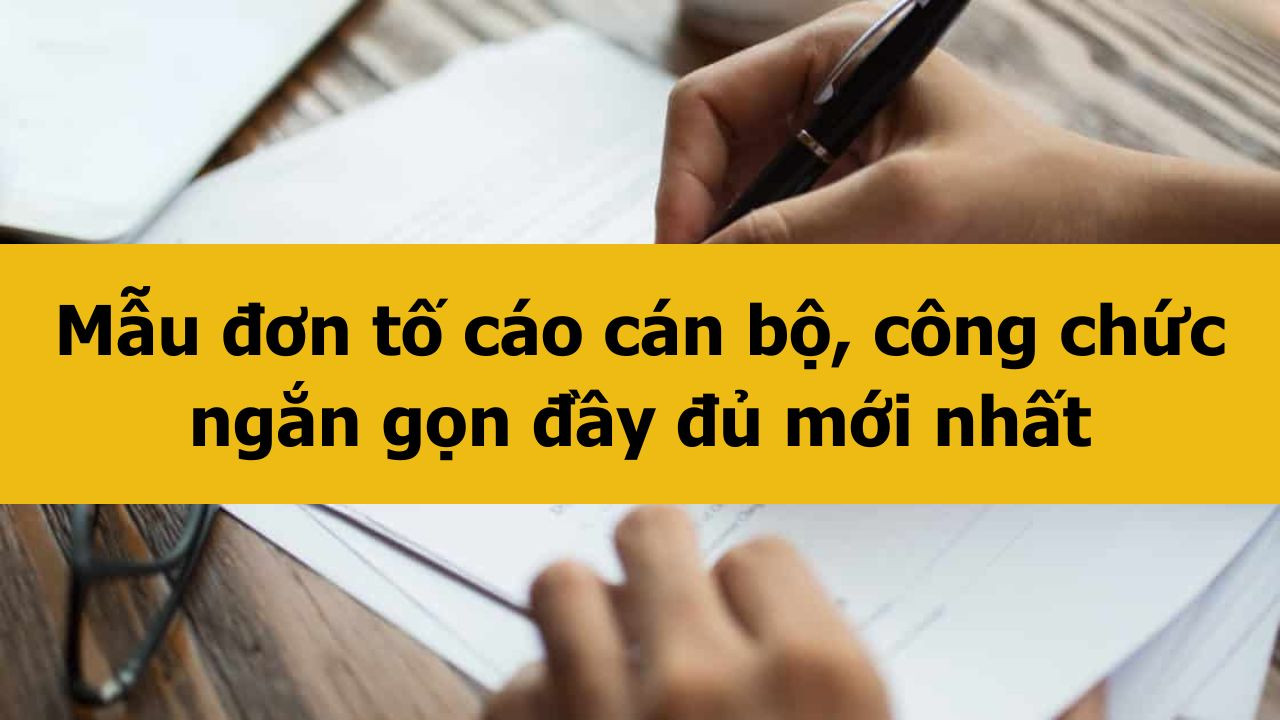
Mẫu đơn tố cáo cán bộ, công chức ngắn gọn đầy đủ mới nhất 2025
Mẫu đơn tố cáo cán bộ, công chức ngắn gọn, đầy đủ mới nhất 2025 giúp người dân phản ánh hành vi vi phạm của cán bộ, công chức theo đúng quy định pháp luật. Đơn cần nêu rõ thông tin người tố cáo, người bị tố cáo, nội dung sự việc và yêu cầu xử lý. Việc lập đơn chính xác giúp cơ quan chức năng kịp thời xác minh, xử lý và đảm bảo tính minh bạch, công bằng. 12/03/2025Mẫu đơn tố cáo lừa đảo ngắn gọn đầy đủ mới nhất 2025
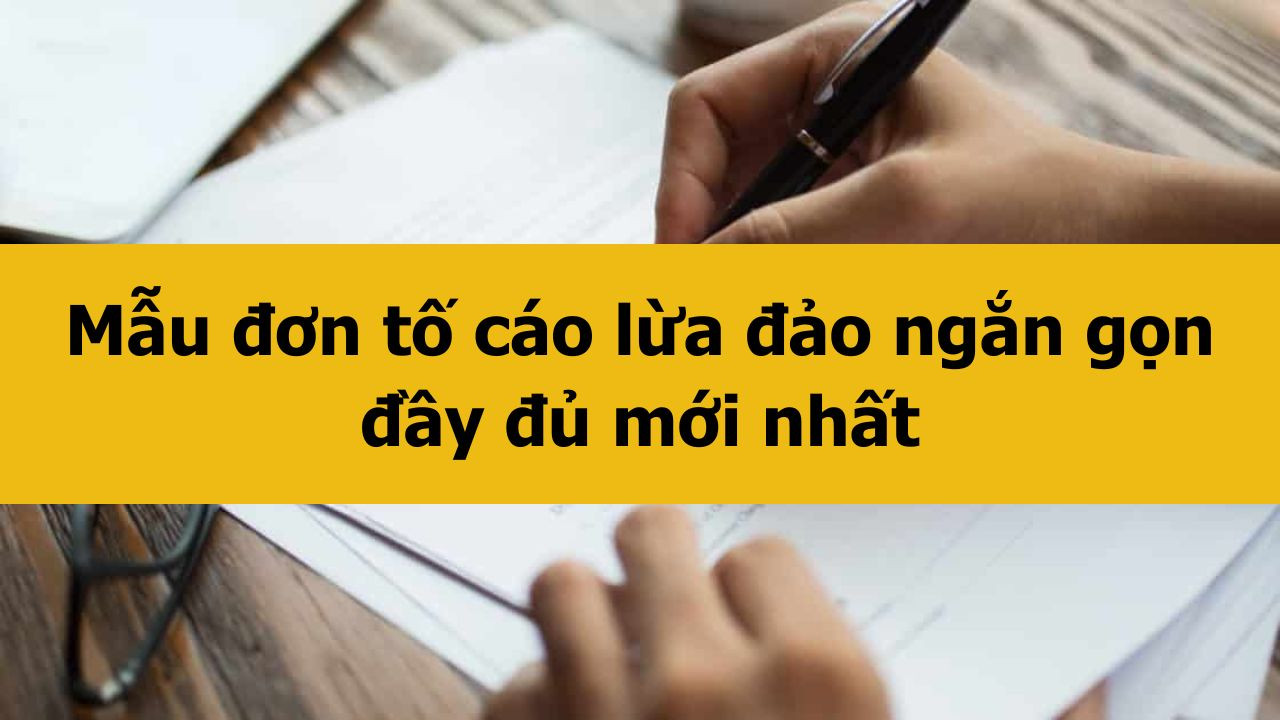
Mẫu đơn tố cáo lừa đảo ngắn gọn đầy đủ mới nhất 2025
Mẫu đơn tố cáo lừa đảo ngắn gọn, đầy đủ mới nhất 2025 giúp cá nhân trình báo hành vi chiếm đoạt tài sản theo đúng quy định pháp luật. Đơn cần nêu rõ thông tin người tố cáo, người bị tố cáo, nội dung sự việc, số tiền hoặc tài sản bị lừa đảo và yêu cầu xử lý. Việc lập đơn chính xác giúp cơ quan chức năng nhanh chóng tiếp nhận, xác minh và giải quyết vụ việc. 12/03/2025Mẫu đơn tố cáo đánh người ngắn gọn đầy đủ mới nhất 2025
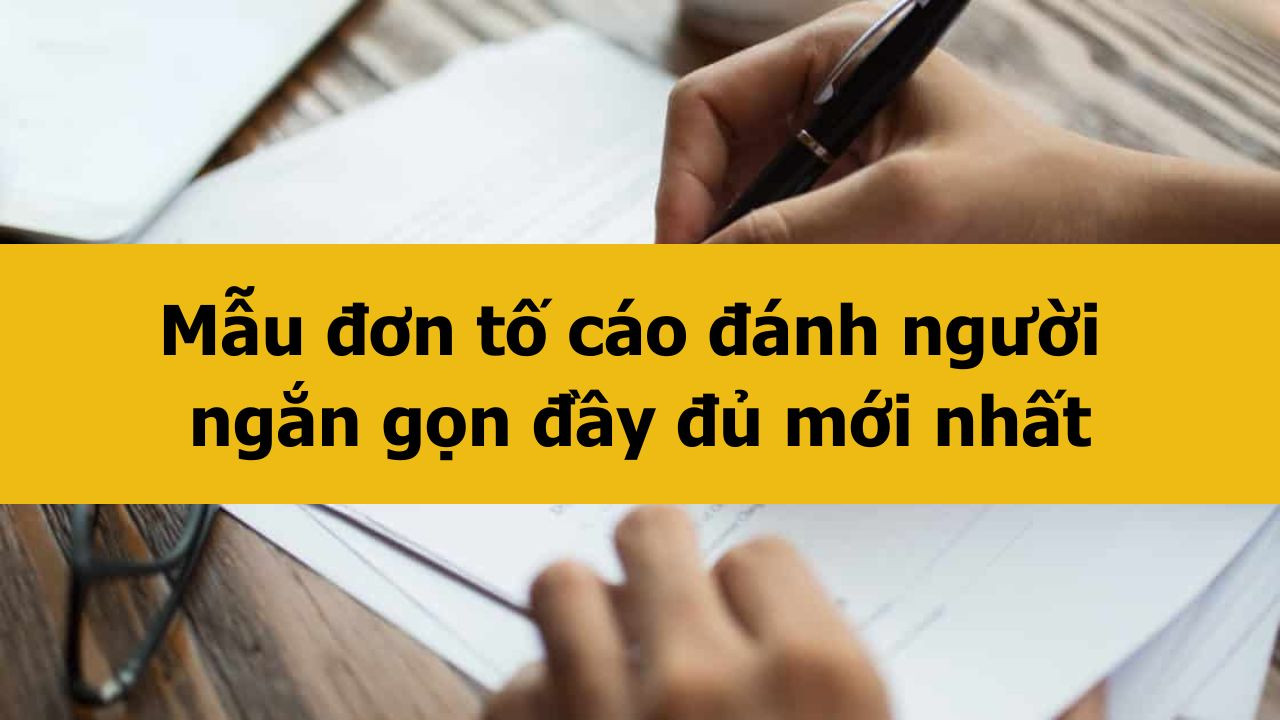
Mẫu đơn tố cáo đánh người ngắn gọn đầy đủ mới nhất 2025
Mẫu đơn tố cáo đánh người ngắn gọn, đầy đủ mới nhất 2025 giúp cá nhân trình báo hành vi xâm phạm sức khỏe theo đúng quy định pháp luật. Đơn cần nêu rõ thông tin người tố cáo, người bị tố cáo, nội dung sự việc và yêu cầu xử lý. Việc lập đơn chính xác giúp cơ quan chức năng nhanh chóng tiếp nhận, xác minh và giải quyết vụ việc. 12/03/2025Quy trình và mẫu đơn xin rút tố cáo mới nhất 2025 cho người dân
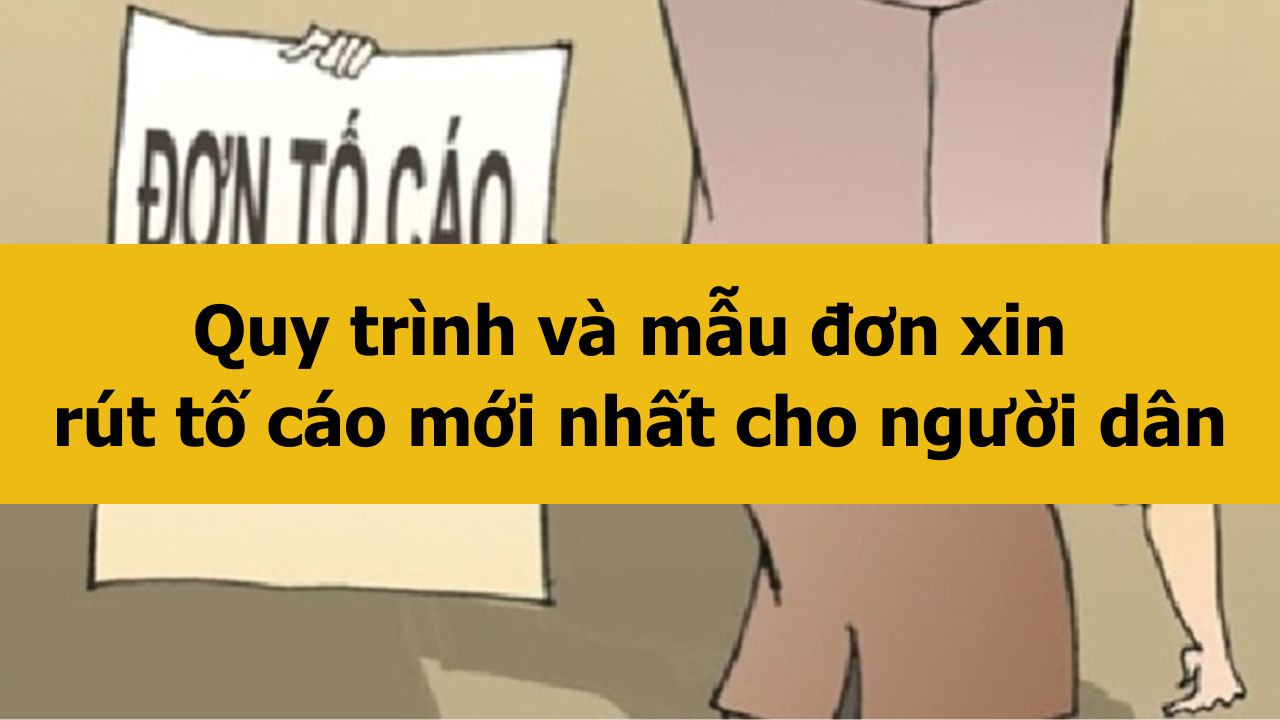
Quy trình và mẫu đơn xin rút tố cáo mới nhất 2025 cho người dân
Việc rút tố cáo cần tuân theo các bước cụ thể, bao gồm nộp đơn, cơ quan có thẩm quyền xem xét và xác nhận yêu cầu. Quy trình này đảm bảo quyền lợi của người tố cáo đồng thời giữ vững tính minh bạch, công bằng trong giải quyết khiếu nại. Dưới đây là hướng dẫn chi tiết về thủ tục và mẫu đơn xin rút tố cáo. 12/03/2025Mẫu đơn tố cáo chuẩn quy định và hướng dẫn viết mới nhất 2025
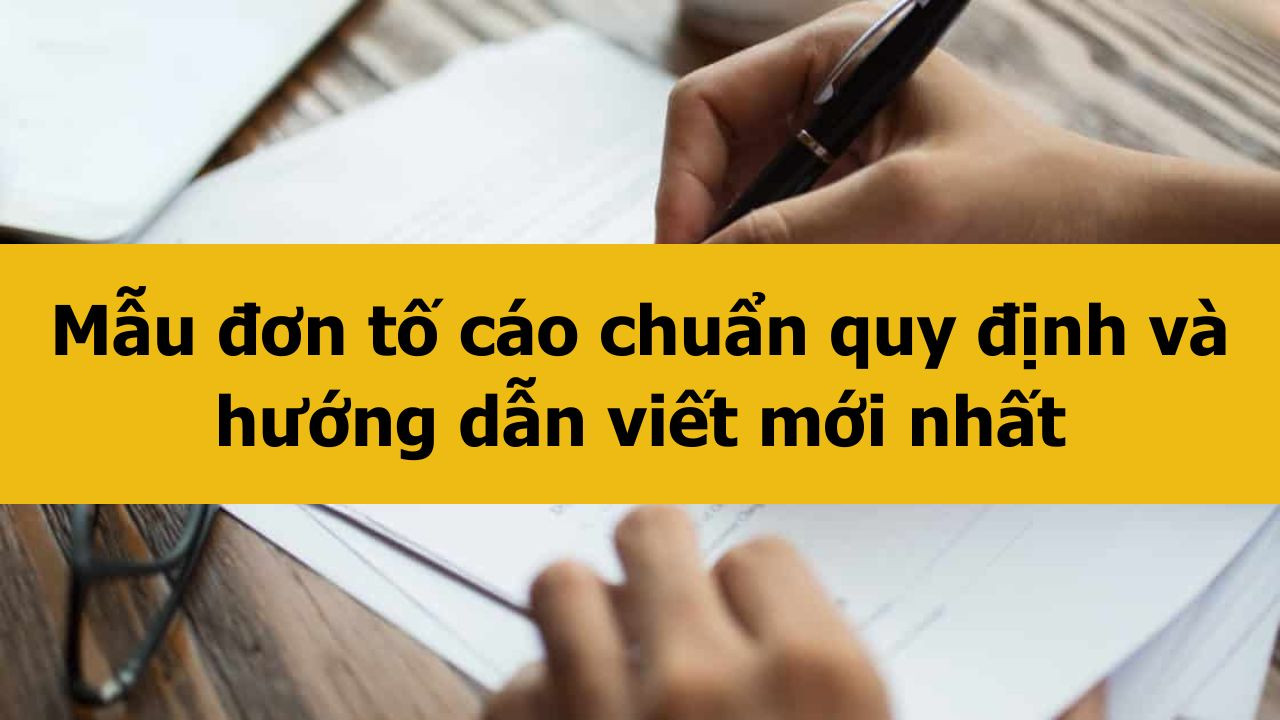

 Nghị định 31/2019/NĐ-CP hướng dẫn Luật tố cáo (Bản Word)
Nghị định 31/2019/NĐ-CP hướng dẫn Luật tố cáo (Bản Word)
 Nghị định 31/2019/NĐ-CP hướng dẫn Luật tố cáo (Bản Pdf)
Nghị định 31/2019/NĐ-CP hướng dẫn Luật tố cáo (Bản Pdf)